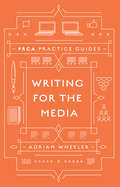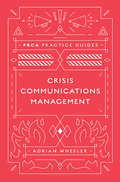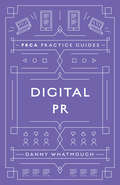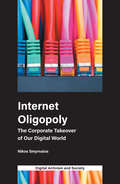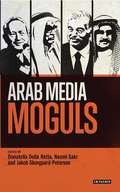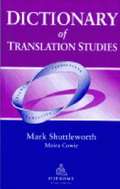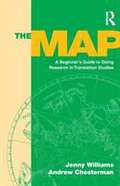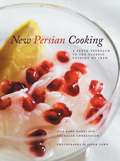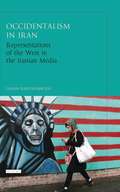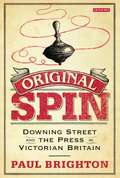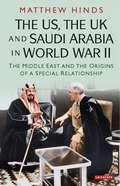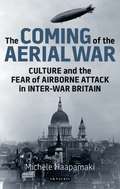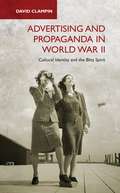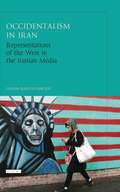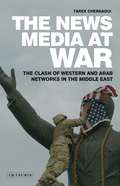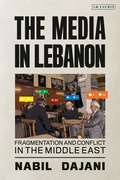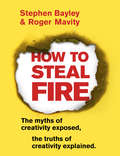- Table View
- List View
Reputation Management: The Future of Corporate Communications and Public Relations (PRCA Practice Guides)
by Tony LanghamA good reputation is vital to success in business and in life. Organisations with the best reputations outperform rivals in a myriad of tangible ways; they recruit higher quality staff, succeed with smaller marketing budgets, and exert greater influence over Governments. Although in the long term reputation is based on reality and behaviour, short term examples of organisations and individuals building unfair advantage can be seen all around us. Despite this, reputation remains an often misunderstood and neglected asset. In Reputation Management: The Future of Corporate Communications and Public Relations, Tony Langham argues that reputation management is the future incarnation of public relations and corporate communications. Featuring specially commissioned essays, as well as exclusive interviews with leading CEOs, influencers and celebrities, the book covers issues as diverse as fake news, AI, James Bond, cyber security and internet bullying. Also included are contributions from thirty-nine of the world's leading reputation managers who exclusively reveal the time they made the most difference to an organisation's reputation. Reputation Management provides a complete blueprint and toolkit for reputation management and is essential reading for CEOs, Board Directors and shareholders in businesses who ultimately bear the responsibility and costs of reputation management. It will also prove indispensable to all professionals and students working in or studying business, marketing, corporate communications and public relations.
Writing for the Media (PRCA Practice Guides)
by Adrian WheelerThis is a media writing guide for PR people. The media use one per cent of the material PR people send them. What can we do to increase the hit-rate of the stories we write on behalf of our clients or employers? We need to know exactly what the media want and what they don't want. We should be able to write material according to the rules and conventions which the media themselves observe. We ought to know how to compose, present and lay out stories in a manner which saves the media time and earns their approval. We can enhance our pick-up if we know how to produce good media photography, video and infographics. We must know how to pitch a story professionally. This Guide is an A to Z of media writing for anyone working in PR who wants to get better results.
Writing for the Media (PRCA Practice Guides)
by Adrian WheelerThis is a media writing guide for PR people. The media use one per cent of the material PR people send them. What can we do to increase the hit-rate of the stories we write on behalf of our clients or employers? We need to know exactly what the media want and what they don't want. We should be able to write material according to the rules and conventions which the media themselves observe. We ought to know how to compose, present and lay out stories in a manner which saves the media time and earns their approval. We can enhance our pick-up if we know how to produce good media photography, video and infographics. We must know how to pitch a story professionally. This Guide is an A to Z of media writing for anyone working in PR who wants to get better results.
Crisis Communications Management (PRCA Practice Guides)
by Adrian WheelerCan you control a crisis? No - but with adequate preparation you can control the reputational consequences. Reputational damage is rarely caused by the crisis itself but, instead, by what the organisation does and says under the media spotlight. This PRCA Practice Guide describes how to invest in readiness and what to do when a crisis strikes. Coverage includes contingency planning, stakeholder identification, crisis communications policy, spokesperson training, the 'Red Book', dark sites, rehearsals and simulations, locations and resources, taking the initiative, and managing the aftermath. The book also covers in detail the role of the mainstream and online media, recommending steps to neutralise hostility and shut down ill-informed comment. Including numerous real-life examples, discussion topics and advice from PR experts, journalists and editors, Crisis Communications Management is intended as an essential guide for public relations professionals, and the people who work with them during a crisis, on how to navigate the turmoil and emerge from a crisis with reputation and credibility intact.
Digital PR (PRCA Practice Guides)
by Danny WhatmoughDigital changes everything. That’s a truth that has played out across industries the world over. And PR is a perfect example of an industry that has been forced to transform. Across every PR discipline, from media relations and content creation through to social media and influencer marketing, digital has changed traditional PR techniques and ushered in a whole new wave of specialisms that previously did not exist. This book acts as a guide to this era of transformation. It’s a manual that summaries the trends affecting our industry. It examines the techniques that have changed and also investigates some of the new approaches that are starting to emerge. It poses the questions that modern PR practitioners need to ask, whether working in-house or in an agency, and will be equally relevant for those studying PR or coming into the industry as it will those who are hardened professionals facing a future that looks significantly different to the tried and tested approaches of the past. This is a book about opportunity. A book that shines a light on how adoption of data, audience planning and creativity, seen through a digital lens, can transform an industry, making it more relevant and necessary that ever before. It’s a celebration of the power of earned media in a world where we are, as consumers of media, increasingly shunning interruptive marketing and looking for connection and true engagement.
Digital PR (PRCA Practice Guides)
by Danny WhatmoughDigital changes everything. That’s a truth that has played out across industries the world over. And PR is a perfect example of an industry that has been forced to transform. Across every PR discipline, from media relations and content creation through to social media and influencer marketing, digital has changed traditional PR techniques and ushered in a whole new wave of specialisms that previously did not exist. This book acts as a guide to this era of transformation. It’s a manual that summaries the trends affecting our industry. It examines the techniques that have changed and also investigates some of the new approaches that are starting to emerge. It poses the questions that modern PR practitioners need to ask, whether working in-house or in an agency, and will be equally relevant for those studying PR or coming into the industry as it will those who are hardened professionals facing a future that looks significantly different to the tried and tested approaches of the past. This is a book about opportunity. A book that shines a light on how adoption of data, audience planning and creativity, seen through a digital lens, can transform an industry, making it more relevant and necessary that ever before. It’s a celebration of the power of earned media in a world where we are, as consumers of media, increasingly shunning interruptive marketing and looking for connection and true engagement.
Internet Oligopoly: The Corporate Takeover of Our Digital World (Digital Activism and Society: Politics, Economy and Culture in Network Communication)
by Nikos SmyrnaiosOver the last decade, the digital technologies in everyday life have multiplied. Our lives have been gradually taken over by digital devices, networks, and services. Although useful, they have also become invasive additions to our personal, professional and public lives. This process has occurred in a globalized and deregulated economy and a few US-based start-ups transformed into an oligopoly of multinationals that today govern the informational infrastructure of our societies. This book offers an analytical framework of the contemporary internet studied through the lens of history and political economy. Google, Apple, Facebook, Amazon and Microsoft are examined as emblematic products of a new capitalist order that is resolutely opposed to the original project of the internet. The author retraces the process of commodification that resulted in financial rationales taking over from collective and individual emancipation and uncovers how this internet oligopoly uses its exorbitant market power to eliminate competition; take advantage of global financialization to exploit human labour on a global scale and to avoid taxation; and how it implements strategies to control our communication methods for accessing information and content online, thus increasingly controlling the digital public sphere. The book reveals how the reshaping of society via private company business models impact on the place of work in future societies, social and economic inequalities, and, ultimately, democracy.
Public Relations And The Power Of Creativity: Strategic Opportunities, Innovation And Critical Challenges (Advances In Public Relations And Communication Management Ser. (PDF) #3)
by Stefania Romenti Øyvind Ihlen Adrian Crookes Sarah BowmanCreativity is the development and use of imagination to solve current challenges or create innovative ideas for the future. The complexity and challenges of the contemporary world arguably require increasing levels of creativity and innovation to manage the disruptive forces at work and build a prosperous and sustainable global society. Public relations is often seen as the discipline that amplifies creative ideas developed by other sectors, but this is changing. With the blurring of lines among creative industries, organisations are increasingly turning to PR to generate the 'big ideas' at the heart of effective communication. This volume gathers 12 outstanding contributions from scholars based in Germany, Finland, Austria, Romania, the UK, Spain, France, Norway, Turkey and the USA. Taken together, the chapters demonstrate a range of possibilities for creative thinking about public relations management and collaboration in different settings and with different purposes. The chapters hint at opportunities, point towards innovation, and challenge our thinking about the power of creativity.
Arab Media Moguls: Community, Legitimacy And Public Life
by Naomi Sakr Jakob Skovgaard-Petersen Donatella Della RattaTransformations in the Arab media landscape are a key element in regional dynamics of political change. Where do private owners of Arab media outlets stand on the scene? What part, if any, have they played in weakening dictatorships, countering sectarianism and political polarisation, and reforming business practices in the Arab world? Arab Media Moguls charts the fortunes of some leading media investors and entrepreneurs from Egypt, Lebanon, Saudi Arabia and Tunisia to examine their motives, management styles, financial performance and links to political power. The resulting profiles offer intriguing insights into the place of family, education, religion and media regulation in regional power structures.Globally, the rise of small digital media, increased competition law and the precedence of more digitally-savvy younger generations have fuelled doubts as to whether the archetypal 'media mogul' is a phenomenon with a future. How do such factors affect power plays in Arab media? Responding critically to existing Western scholarship and commentary on magnates in US and European media, this book explores how far existing assumptions and perceptions about powerful media owners' eccentricity, innovation and risk-taking apply in the Arab context and offers a range of alternative approaches to understanding the central position of certain individuals in the fast-changing Arab media business.
Dictionary Of Translation Studies (PDF)
by Mark Shuttleworth Moira CowiePublished at a time of unprecedented growth of interest in translation, the Dictionary of Translation Studies aims to present the insights of a number of different approaches to translation in an unbiased, non-partisan way. With more than 300 articles, this essential volume provides the reader with a snapshot of a rapidly developing discipline, based on work produced in serveral languages. With a clear, easy-to-follow layout, the Dictionary provides a comprehensive and highly accessible survey of key terms and concepts (such as Abusive Translation, Equivalence, Informationsangebot, Minimax Principle, Texteme and Thick Translation), types of activity (Autotranslation, Dubbing, Signed Language Interpreting), and schools and approaches (Leipzig School, Manipulation School, Nitra School). Each term is presented within the context in which it first occurred and is given a definition which is both clear and informative. Major entries include a discussion of relevant viewpoints as well as comments on how the usage and application of the term have developed subsequent to its coining. In addition, all entries provide suggestions for further reading, and there is an extensive bibliography included at the end. This is an indispensable tool for anyone studying or teaching translation at university level.
The Map (PDF): A Beginner's Guide To Doing Research In Translation Studies
by Jenny Williams Andrew ChestermanThe Map is a practical guidebook introducing the basics of research in translation studies for students doing their first major research project in the field. Depending on where they are studying, this may be at advanced undergraduate (BA) or at postgraduate (MA/PHD) level. The book consists of ten chapters. Chapter 1 offers an overview of 12 research areas in translation studies in order to help students identify a topic and establish some of the current research questions relating to it. Chapter 2 is designed to assist students in planning their research project and covers topics such as refining the initial idea, determining the scope of the project, checking out resources, reading critically, keeping complete bibliographic records, and working with a supervisor. Chapters 3 to 7 provide some of the conceptual and methodological tools needed in this area of research, with detailed discussion of such topics as theoretical models of translation, types of research, asking questions, making claims, formulating hypotheses, establishing relations between variables, and selecting and analyzing data. Chapters 8 and 9 are about presenting one's research, in writing as well as orally. Finally, chapter 10 deals with some of the criteria commonly used in research assessment, especially in the assessment of theses. The authors provide detailed guidance on further reading throughout. This is an essential reference work for research students and lecturers involved in supervising research projects and degrees.
The Arab-Israeli Conflict in the Media: Producing Shared Memory and National Identity in the Global Television Era
by Tamar AshuriThe television industry has metamorphosised from a national and largely-monopolized sector to a commercial and global enterprise. This has profoundly altered the way 'historical truth' and shared memory are constructed and conveyed. Here Ashuri provides a groundbreaking study of the changes through the vantage point of an illuminating mode of television production, international co-productions. By taking an example based on current events in the Middle East - a television documentary on the Arab Israeli conflict co-produced by three television networks (BBC, PBS, MBC) - her study enriches contemporary media research, providing an unprecedented, behind-the-scenes look at the entire production process of a co-produced television history.She shows that making the documentary on the Arab-Israeli struggle turned into a war: a war over competing memories, interpretation, editing, and finally narration. Ashuri's analysis of transnational documentary collaborations reveals inherent tensions between economic constraints and cultural forces, between the local and global, and between 'shared' and 'cosmopolitan' memory.Enriching political economy studies of media by exploring the cultural negotiations at the heart of television production process, and highlighting the economic processes that underlie the contested constructions of national histories, "The Arab-Israeli Conflict in the Media" will be essential reading for those interested in media and television studies, as well as globalization and cultural identity.
New Persian Cooking: A Fresh Approach to the Classic Cuisine of Iran
by Jila Dana-Haeri Shahrzad Ghorashian Jason LoweThe Subtleties of Persian Cuisine and its exciting mix of flavours produce a style of cooking which is totally distinct. The result is one of the great, but least known cuisines of the world. The traditional emphasis on the use of fresh and seasonal ingredients and the importance of a complementary mix of herbs, vegetables, meat, fish, fruit and spices, accords well with the modern emphasis on healthy eating and a balanced diet.The food of Iran is a riot of tastes and aromas with a character quite separate from its Middle Eastern, Turkish and Indian neighbours. The varieties of beautiful jewelled rice dishes, the pre-eminence of saffron and rose-petals, pomegranate seeds, berries and walnuts, the subtle mixings of tarragon, dill, fenugreek leaves, coriander, mint and other herbs, all make for an array of exquisite mouth-watering recipes which mark this cuisine truly original.This highly-illustrated cookbook offers an enticing introduction to traditional Persian cuisine through sumptuous recipes that are accessible to the non-professional cook and are based on ingredients that are readily available in the West. Jila Dana-Haeri has adapted traditional Persian recipes to fit the requirements of today's modern cooks, while Shahrzad Ghorashian has translated Jila's passion into words, creating simple to follow recipes which demonstrate that Persian food can be made easily anywhere in the world.Featuring stunning photographs by award-winning food photographer Jason Lowe, this book will be essential for anyone interested in sampling Persian cuisine and expanding their cultural horizons.
Occidentalism in Iran: Representations of the West in the Iranian Media
by Ehsan BakhshandehNegative portrayals of the West in Iran are often centred around the CIA-engineered coup of 1953, which overthrew Prime Minister Mohammad Mosaddeq, or the hostage-taking crisis in 1979 following the attack on the US embassy in Tehran. Looking past these iconic events, Ehsan Bakhshandeh explores the deeper anti-imperialistic and anti-hegemonic roots of the hostility to Westernism that is evident in the Iranian press. Distinguishing between negative and outright hostile perceptions of the West - which also encompasses Britain, France and Germany - the book traces how the West is represented as the `Occident' in the country's media.From the Qajar period and the Tobacco protests of the late nineteenth century to the ill-fated Anglo-Persian Treaty of 1919, through to the 1953 coup and 1979 hostage crisis, Bakshandeh highlights the various points in history when misinterpretations and conflicts led to a demonisation of the `other' in the Iranian media. The major recent source of contention between the West and Iran has of course been the nuclear issue and the resultant regime of sanctions. By examining how this and other issues have been represented by the Iranian press, Bakshandeh offers a crucial and often-overlooked aspect of the key relationship between Iran and the West.
Innovators in Digital News
by Lucy KüngNews organisations are struggling with technology transitions and fearful for their future. Yet some organisations are succeeding. Why are organisations such as Vice and BuzzFeed investing in journalism and why are pedigree journalists joining them? Why are news organisations making journalists redundant but recruiting technologists? Why does everyone seem to be embracing native advertising? Why are some news organisations more innovative than others? Drawing on extensive first-hand research this book explains how different international media organisations approach digital news and pinpoints the common organisational factors that help build their success.
Original Spin: Downing Street and the Press in Victorian Britain
by Paul BrightonSecret lunches, off-the-record briefings, the leaking of confidential information and tightly-organised media launches - the well-known world of modern political spin. But is this really a new phenomenon or have politicians been manipulating the press for as long as newspapers have existed? In this important new book, Paul Brighton shows that spin is not something dreamed up by modern, media-savvy politicians. In fact, it was one of the best-kept political secrets of the eighteenth and nineteenth centuries. From Peel and Palmerston to Gladstone and Disraeli, Prime Ministers have all tried to manipulate the press to a greater or lesser extent. Brighton uncovers the covert contacts between Westminster and Fleet Street and reveals how the Victorian occupants of 10 Downing Street secretly conveyed their viewpoints via the newspapers. For the first time, Original Spin tells the whole, unvarnished, story
The US, the UK and Saudi Arabia in World War II: The Middle East and the Origins of a Special Relationship (International Library of Twentieth Century History)
by Matthew HindsThe story of Anglo-American relations in Saudi Arabia during the Second World War has generally been viewed as one of discord and hegemonic rivalry, a perspective reinforced by a tendency to consider Britain's decline and the ascent of US power as inevitable. In this engaging and timely study, Matthew Hinds calls into question such assumptions and reveals a relationship that, though hard-nosed, functioned through interdependence and strategic parity. Drawing upon an array of archives from both sides of the Atlantic, Hinds traces the flow of key events and policies as well as the leading figures who shaped events to show why, how and to what extent the allies and Saudi Arabia became 'mixed up together', in the words of Winston Churchill. Perhaps most fundamentally, Britain and the United States were enthralled by the promise of Saudi Arabia serving as an auxiliary to Allied strategy. Obtaining King Ibn Saud's tacit support or more specifically, his 'benevolent neutrality', meant having vital access, not only to the country's prospective oil reserves, but to its prized geographic location, its centrality within Islam and, as international politics increasingly followed an anti-colonial path, to its credentials as a sovereign and independent Arab state. Given what was at stake, London and Washington saw their engagement in Saudi Arabia as seminal; a genuine blueprint for how to forge a lasting 'Special Relationship' throughout the Middle East. Hinds' bold new interpretation is a vital work that enlarges our understanding of the Anglo-American wartime alliance.
The Coming of the Aerial War: Culture and the Fear of Airborne Attack in Inter-War Britain (International Library of Twentieth Century History)
by Michele HaapamäkiIn the first half of the 20th century the possibility of flight opened up entirely new avenues of thought and exploration. In the age of H.G. Wells and Biggles, the opening up of the air to balloons and planes - the Royal Flying Corps was founded in 1912 - appealed to concepts of courage and bravery which would be both encouraged and undermined by the experiences of World War I. The sky also held new terrors for everyday people who were now within reach of an airborne enemy - these fears included the possibilities of bombing, poison gas, surveillance and social control. This duality of fear and enthusiasm drove the Air Raid Precaution movement, while vocal elements in the press and in parliament called for radical plans to cope with apocalyptic scenarios. Here, Michele Haapamäki charts the history of flight and of war in the air in the early 20th century, addressing the key issues of interwar historiography such as patriotism, fear, masculinity and propaganda.
Advertising and Propaganda in World War II: Cultural Identity and the Blitz Spirit (International Library of Twentieth Century History)
by David ClampinThe 'blitz' – the period of Nazi bombing campaigns on civilian Britain during World War II - was a formative period for British national identity. In this groundbreaking book, David Clampin looks at the images, slogans and campaigns which helped to form the fabled 'blitz spirit' – powerfully echoed in Winston Churchill's speeches. Because advertisers attempted to capitalise on war-time patriotism, Clampin's unique focus on advertising provides a visually-rich seam of new information on the everyday war, and makes an enormous contribution to the debate on people's experiences of war and nationalism. Using a remarkable and hitherto unseen range of primary source material - advertisements in the press, slogans and posters - this work will reshape the contested meanings of the 'Home Front', opening up cultural history discourses on gender and nationalism and becoming essential reading for historians of World War II and students and scholars of Media Studies and Communication Studies.
Occidentalism in Iran: Representations of the West in the Iranian Media (International Library of Iranian Studies)
by Ehsan BakhshandehNegative portrayals of the West in Iran are often centred around the CIA-engineered coup of 1953, which overthrew Prime Minister Mohammad Mosaddeq, or the hostage-taking crisis in 1979 following the attack on the US embassy in Tehran. Looking past these iconic events, Ehsan Bakhshandeh explores the deeper anti-imperialistic and anti-hegemonic roots of the hostility to Westernism that is evident in the Iranian press. Distinguishing between negative and outright hostile perceptions of the West – which also encompasses Britain, France and Germany – the book traces how the West is represented as the 'Occident' in the country's media.From the Qajar period and the Tobacco protests of the late nineteenth century to the ill-fated Anglo-Persian Treaty of 1919, through to the 1953 coup and 1979 hostage crisis, Bakshandeh highlights the various points in history when misinterpretations and conflicts led to a demonisation of the 'other' in the Iranian media. The major recent source of contention between the West and Iran has of course been the nuclear issue and the resultant regime of sanctions. By examining how this and other issues have been represented by the Iranian press, Bakshandeh offers a crucial and often-overlooked aspect of the key relationship between Iran and the West.
Dissent and Revolution in a Digital Age: Social Media, Blogging and Activism in Egypt (Library of Modern Middle East Studies)
by David FarisDuring the Arab uprisings of early 2011, which saw the overthrow of Zine el-Abadine Ben Ali in Tunisia and Hosni Mubarak in Egypt, the role of digital media and social networking tools was widely reported. This was also recognized by the very authorities fighting against popular pressure for change, and the Egyptian government's attempt to block internet and mobile phone access in January 2011 demonstrated the extent to which it was seen as powerful and potentially subversive tool. What is yet to be examined is the local context that allowed digital media to play this role: Egypt, for example, a history of online activism laid important ground work for the scenes in Tahrir Square. Here, David Faris argues that it was circumstances particular to Egypt, more than the 'spark' from Tunisia, that allowed the revolution to take off: namely blogging and digital activism stretching back into the 1990s, combined with sustained and numerous protest movements and an independent press. Dissent and Revolution in a Digital Age tracks the rocky path taken by Egyptian bloggers operating in Mubarak's authoritarian regime to illustrate how the state monopoly on information was eroded, making space for dissent and digital activism.
Media, Revolution and Politics in Egypt: The Story of an Uprising (Reuters Institute for the Study of Journalism)
by Abdalla F. HassanMedia, Revolution, and Politics in Egypt: The Story of an Uprising chronicles the political and media dynamic in pre- and post-revolution Egypt and what it could mean for the country's hoped-for democratic transition. Against the backdrop of a resurrected police state, rights gained through revolution have whittled away. With a polarised body politic, the facts have become amorphous as various ideological trends cling to their own narratives of truth, making national reconciliation more challenging than ever
The News Media At War: The Clash of Western and Arab Networks in the Middle East
by Tarek CherkaouiTarek Cherkaoui reveals how geo-political and ideological legacies of the past, which divide the world into a dichotomy of 'us' against 'them', play a dominant role in reinforcing the ensuing polarisation of our media.
Media in Lebanon: Fragmentation and Conflict in the Middle East
by Nabil DajaniLebanese society is famously, and even notoriously, fragmented, along both class and sectarian lines. Here, Nabil Dajani looks at how this societal division impacts on the nature of the mass media in Lebanon. Implementing the wider theory that the structure and content of mass media is unique to the society within which it operates, he looks at how Lebanese media have often helped to sustain the sectarian divisions within Lebanese society. Dealing with newspapers, radio and television as well as new and emerging forms of communication, such as the internet, social media websites and blogs, he examines how the media both reflect societal realties as well as the ways they influence social consciousness. Beginning with an analysis of the socio-political context of modern-day Lebanon, Dajani critically examines the historical and current realities of the media in this country.
How to Steal Fire: The Myths of Creativity Exposed, The Truths of Creativity Explained
by Stephen Bayley Roger MavityCreativity is a powerful force. It drives innovation, boosts our economy and enables us to fulfil our human potential. But what actually is creativity? Is it overrated? And where exactly do ideas come from in the first place?In this book, design gurus Stephen Bayley and Roger Mavity debunk the myths and common misconceptions that form our current thinking around this complex subject. In showing readers how to think boldly and remain undaunted by challenges, they examine the phenomenon from all sides: not only the creativity of invention and of imagination but also that of perception and of discovery, in order to reveal the truths we often overlook.Ultimately, How to Steal Fire will help you reclaim yourself from the anonymous dreariness of a data-driven culture and spark imaginative thought.

